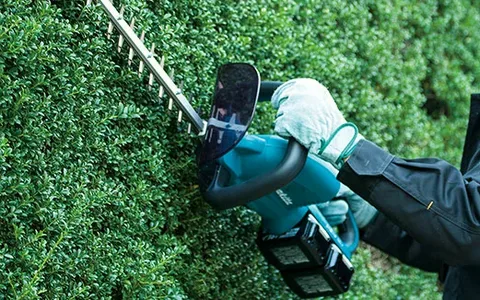Maintaining a neat and tidy garden often starts with the hedges. While trimming hedges might seem straightforward, doing it the wrong way can damage the plants and negatively affect their growth. In this guide, you’ll learn how to hedge trimmers without damaging them, using proven techniques and the right tools.
Why Proper Hedge Trimming Matters
Hedges are more than just a boundary or privacy screen—they’re living plants that need care. Poor trimming can lead to:
- Browning or dead branches
- Uneven growth
- Increased susceptibility to pests and disease
Learning how to trim your hedges without damaging them helps maintain their health and shape, ensuring they look their best all year round.
Tools You’ll Need
Before starting, make sure you have the right tools:
- Hedge shears – for precise manual trimming
- Electric or gas hedge trimmer – for larger hedges
- Loppers or pruning shears – for thicker branches
- Gloves and safety goggles – for protection
Always ensure your tools are sharp and clean. Dull blades can crush rather than cut branches, causing long-term harm.
Step-by-Step: How to Trim Your Hedges Without Damaging Them
1. Start With a Plan
Look at the natural shape of your hedge. Decide if you want a formal, structured shape or a more relaxed, natural look. Sketching it out can help avoid over-trimming.
2. Trim at the Right Time
Timing is crucial. For most hedges:
- Evergreens: Trim in late spring or early summer
- Deciduous shrubs: Trim after flowering or in late winter
Avoid trimming during extreme heat or frost, as this can shock the plant.
3. Shape from the Bottom Up
Always trim your hedges so they’re wider at the base than at the top. This allows sunlight to reach all parts of the plant evenly and prevents the bottom from thinning out.
4. Use the Right Technique
- Begin trimming slowly, especially if you’re using power tools
- Take off small amounts at a time—it’s easier to go back and trim more than to fix over-trimming
- Step back frequently to check for evenness
This careful, incremental approach is key when learning how to trim your hedges without damaging them.
Avoid Common Mistakes
- Cutting too deep: Don’t trim into old wood where there are no leaves—many hedge plants won’t regrow from these areas
- Ignoring plant type: Some species, like boxwood, tolerate heavy trimming, while others, like azaleas, need a gentler touch
- Not cleaning tools: Dirty blades can spread disease between plants
Aftercare: Help Your Hedges Recover
After trimming:
- Water your hedges well, especially during dry weather
- Apply mulch to retain moisture and reduce weed growth
- Use a balanced fertilizer if necessary to promote new growth
These steps help your hedges recover and stay healthy after a trim.
Final Thoughts
Knowing how to trim your hedges without damaging them takes a mix of timing, technique, and care. By using the right tools, trimming during the proper season, and shaping thoughtfully, you can maintain healthy, attractive hedges that enhance the beauty of your outdoor space.

